
Preparing your foal for
hoof trimming
Your horse is going to be seeing a farrier every six to
eight weeks for its entire life, so it makes sense to
start early with training your horse to stand quietly
for trimming and shoeing. Horses that can't behave for
farriers are more than just a perpetual nuisance; they
can be dangerous to handlers and horseshoers, they can
make correct trimming and shoeing very difficult, and
bad manners for the farrier can significantly reduce
your horse’s future value.
 Preparing your foal.
Preparing your foal.
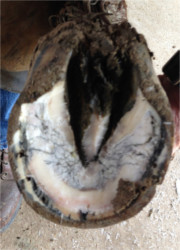
Thrush and your horse’s hooves
What is Thrush
Almost all horse owners will have a horse with thrush at
some time, and it will probably happen quite often.
Thrush is one of the most common and persistent
afflictions that horses can get, but thankfully it
almost always causes few problems, and it is easy to
treat. That said, the old adage ‘no foot, no horse’
holds true, and injuries or disease to the hoof should
always be taken seriously.
 What is Thrush?
What is Thrush?
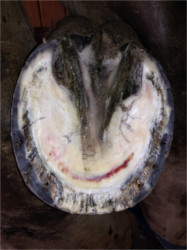
Grass Laminitis
What is laminitis?
Laminitis is the inflammation of the laminae, or the
lining inside the hoof wall. The laminae is a
complex structure, which plays an important role in
the general health and circulation of the horse. It
is rich in highly oxygenated blood, which helps it
do its job, but makes it susceptible to infection
and inflammation.
 Grass Laminitis
Grass Laminitis
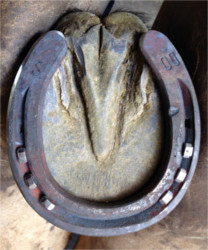
When does a horse
need shoes?
In their natural state in the wild, horses roamed
over large areas of grasslands seldom putting their
feet under heavy strain, and keeping their hooves
neatly shaped with natural wear. Once horses came
into the care of humans, those conditions changed,
and the horse’s feet were asked to endure tougher
work on more varied terrain, and now they needed the
protection of horseshoes.
 When to shoe?
When to shoe?
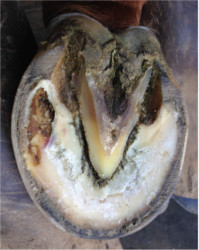
Hoof Abscesses
Hoof abscesses are one of the most painful
conditions your horse could suffer from, and
unfortunately they are complex to treat and occur
all too often. In normal conditions, the horse’s
hoof is well protected with a hard outer wall and a
softer, but very resilient sole. Even the more
sensitive frog and heel are remarkably tough and
resistant to injury. However, it’s that very
resilience that makes hoof abscesses such a
challenge, and what makes them so painful.
 Hoof abscesses
Hoof abscesses
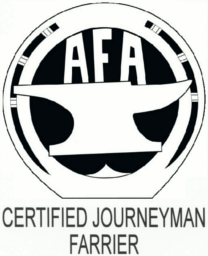
Why Use an AFA Certified Farrier?
Proper care of your horse’s hooves form the most
fundamental part of good horsemanship. Without
strong, healthy feet, there’s not much your horse
can do! That’s why regular visits from a farrier -
every six weeks, more often for very young horses -
are an essential part of your horse care routine.
 Why use an AFA Farrier?
Why use an AFA Farrier?